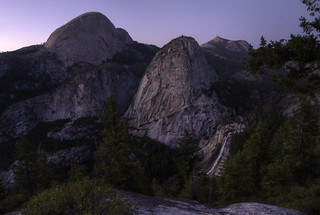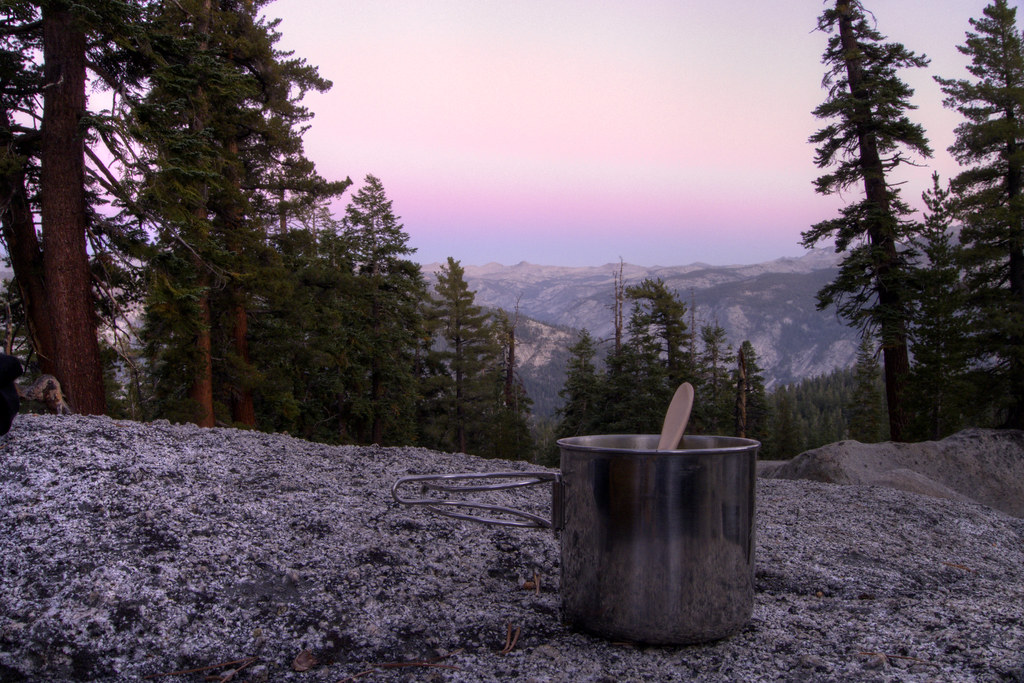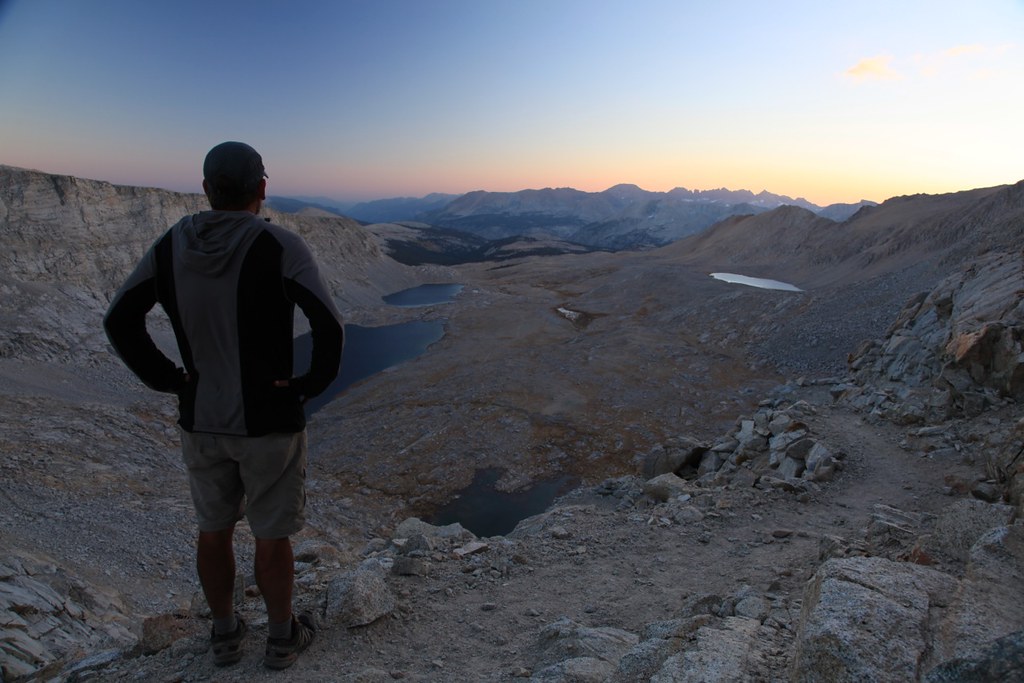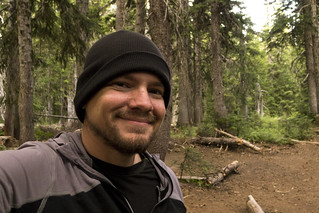Below, you’ll find my review of the Kindle as it pertains to backpacking. I have also included links to various handy resources you may want to have on your e-reader of choice, when on the trail.
So, why is the Kindle my favorite non-essential item?
1 – It shaves ounces from my pack
I can carry hundreds of books and it will never weigh more than 8.5 ounces (9.5 oz. with my homemade protective sleeve, see below). Before the kindle I normally packed two books for a one-week trip, which weighed about 12-13 oz. Also, I will often pick up a new paperback before heading out, and just not get into it, so it just becomes dead weight. With an ebook reader, I can take anything I think I may want to read, and purchase new books along the way, without worrying about the weight.
Not only do I carry dozens of books, but also hiking-related reference books and documents that I created myself, that I would never carry with me including:
- Wilderness survival books and quick reference guides
- First aid guides and emergency phone numbers
- I have created PDFs for quick information using sites like, http://www.backpacker.com/november-09-the-ultimate-first-aid-manual/skills/13607. There are a lot of free first aid books online in PDF format as well, such as, http://www.firstaidtopics.com/downloads/First-Aid-and-CPR-Manual.pdf or http://www.au.af.mil/au/awc/awcgate/army/fm4_25x11.pdf
- List of phone numbers for hospitals, rangers stations, police stations, etc.
- Town and Backup Trail Maps
- An ebook reader doesn’t replace the need of a good paper map, of course, but can be used for a backup trail map. These maps can also cover areas you doubt you will need, such as towns and side trails that could be needed in emergencies or resupply. Saving screenshots of Google Maps as PDFs (see below) and syncing them to the Kindle can be very useful.
- On the Appalachian Trail, I purchased Awol’s loose-leaf AT Guide and scanned it into a PDF file for the Kindle. I kept the pages I would need for a section of trail in my pocket, and put the ones I didn't need in a bounce box that I sent to the post office in my next resupply town. On several occasions it came in handy to have the entire book on the Kindle.
- Keep information on airports, taxi and shuttle services, and Bus and Train stations. Such as phone numbers, addresses, and schedules.
- Miscellaneous backpacking notes, documents, or spreadsheets
- For example, instructions for tying useful knots, wildlife and plant field guides, tips for predicting weather, or information on what plants or berries can be safely eaten.
To easily create PDFs, you can download the free PDF creator, Cute PDF. After installing, simply print the document and select the CutePDF Printer to save the file as a PDF.
2 - Battery Life
One reason I’m not a fan of gadgets on the trail, is batteries. The kindle will last up to three or four weeks on a single charge, if wi-fi is turned off. Two weeks is a good estimate if you are a heavy reader and use the kindle for note taking or playing a game.
The e-ink display on the kindle, will only use the battery when you turn a page, or when the screen refreshes while typing or using an app. This means, when I fall asleep in the middle of reading, it won’t drain the battery. Also, when I wake back up it will be on the same page I was reading.
The e-ink display on the kindle, will only use the battery when you turn a page, or when the screen refreshes while typing or using an app. This means, when I fall asleep in the middle of reading, it won’t drain the battery. Also, when I wake back up it will be on the same page I was reading.
If longer battery life is needed, I also carried a USB charger (.883 ounces) with two lithium AA batteries (1.06 ounces) that I used for an emergency backup for my cell phone, or if I needed it, to get another couple weeks of power for my kindle.
3 – FREE Internet Access
Free, as in Amazon does not charge you to connect to their 3G network (note: All Kindle's allow you to connect to wi-fi, but to use Amazon's free 3G service, a 3G capable Kindle must be purchased.) You can't watch videos or visit flash web sites, and the browser on the kindle is a pain to use. But, that is a good thing, in my opinion. I don’t want to be tempted to browse the internet on the trail, or have access to a million apps. It does come in handy, however, if you are able to get a cell signal and want to check the weather, trail conditions, or read trail journals of other people on the trail. It's also handy if you’re nearing a town and want to know what stores, restaurants, or hotels are available, or make reservations. I can also email friends and family. If nothing else, it’s nice to know you have a way to search for phone numbers of business, taxis, or emergency services.
If the kindle ever becomes a better internet browsing tool, I may have to stop carrying it. I don't want the distraction. As it is now, its perfect. Annoying enough to use, so that I only use it when I have a good reason.
4 - The Kindle Store
When in cell phone range, you can access more books, or books about a specific topic you may only have thought about while on the trail. For example, when hiking in Yosemite, I was inspired to read the writings of John Muir. Or, I could have gotten a book about the park in general. It was also nice to be able to download something new to read while sitting in a shelter on the Appalachian Trail, without having to wait for the next resupply town.
5 - Cost
The cheapest Kindle is currently only $79 with wi-fi only. I prefer the $139 3G model with a keyboard (for note taking). The extra $60 is worth it to me to have the unlimited free 3G service, since wi-fi is useless on the trail.
Special Care
The only real downside to the Kindle or any other ebook reader is that they requires special care that books don’t. I found an inexpensive way to protect my Kindle that has survived 2,400 miles of hiking and cramming it in and out of a backpack a couple hundred times. I cut a blue foam mat to torso length and used the excess to make a cheap case. I put my Kindle in a zip-top bag to waterproof it, and slip it into the foam case. I've dropped it a few times without problems. In the zip-top bag, I've dripped water on it and handled it with greasy fingers while I'm eating and it still looks brand new.
I could say much more, but this is strictly a review of Amazon’s Kindle as it relates to hiking, camping, and backpacking. For more specs, and demonstrations of how it works, please visit the Kindle page on Amazon.com.
A Backpacker's Life List by Ryan Grayson is licensed under a Creative Commons Attribution-NonCommercial-NoDerivs 3.0 Unported License.


com-s.jpg)
com-s.jpg)
com-s.jpg)
com-s.jpg)


